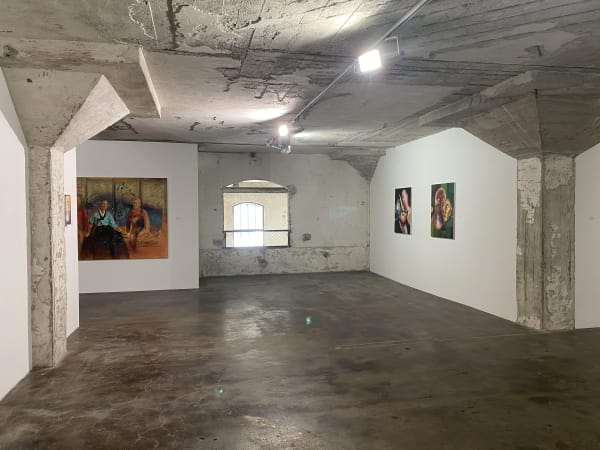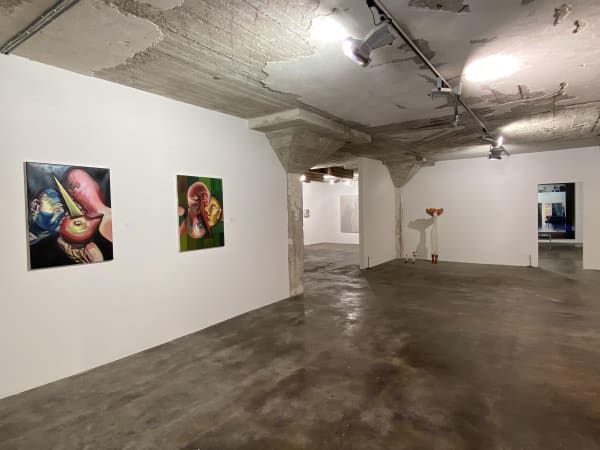This year’s main exhibition at Vestfossen Kunstlaboratorium, Girl Meets Girl, can be seen as a conversation between the unique voices of 25 significant artists, all gathered under the same roof. Its point of departure is the life’s work of the British artist Rose Wylie and the exhibition has indeed borrowed its title from one of her works: Girl Now meets Girl Then (2019). Here you will find a huge spectrum of expression – from Caroline Walker’s updating of classical painting, through Urara Tsuchiya’s sexually inflected ceramics and Ina Gerken’s fresh context for the language of abstract expressionism, to Lee Won-Kyoung’s animal-like creatures woven from metal wire – and that’s just to mention a British, Japanese, German, and Korean artist in an exhibition of many different nationalities. Together these voices talk about highly contemporary issues, and yet communicate across several generations, from 90’s-born Rosie Gibbens to nearly 90-year-old Rose Wylie. It is therefore only natural that Wylie is the point of departure for this exhibition. Her artistic career has spanned seven decades, developing in twists and turns all the way up to our own day – rather like her 15-metre-long painting of a snake you will encounter on the top floor.
An exhibition made up exclusively of female artists will, of course, also address issues concerning the position of women in the art world, as well as the historical imbalance in the representation of female artists. For example, Rosa Loy has a folkloric vision for strengthening the role of women in society, Aurora Reinhard reflects on power relations in the art world, and Liane Lang considers the place of women in history. And here again, the unique dialogue set up by these artists gives the exhibition its fundamental premise: a conversation about ideas, lived realities, and emotions that have formed their world, and therefore also ours. Girl Meets Girl invites us to consider these artists as important voices – in our time, and on a much wider timescale – and also invites us to take part in their conversation about the world around us.




